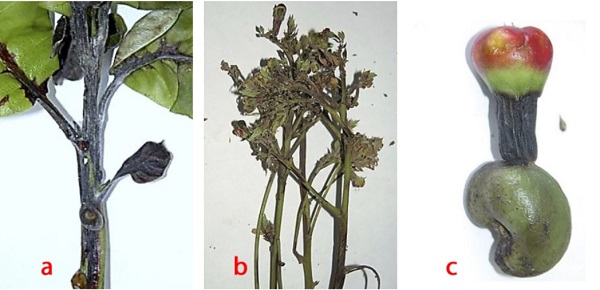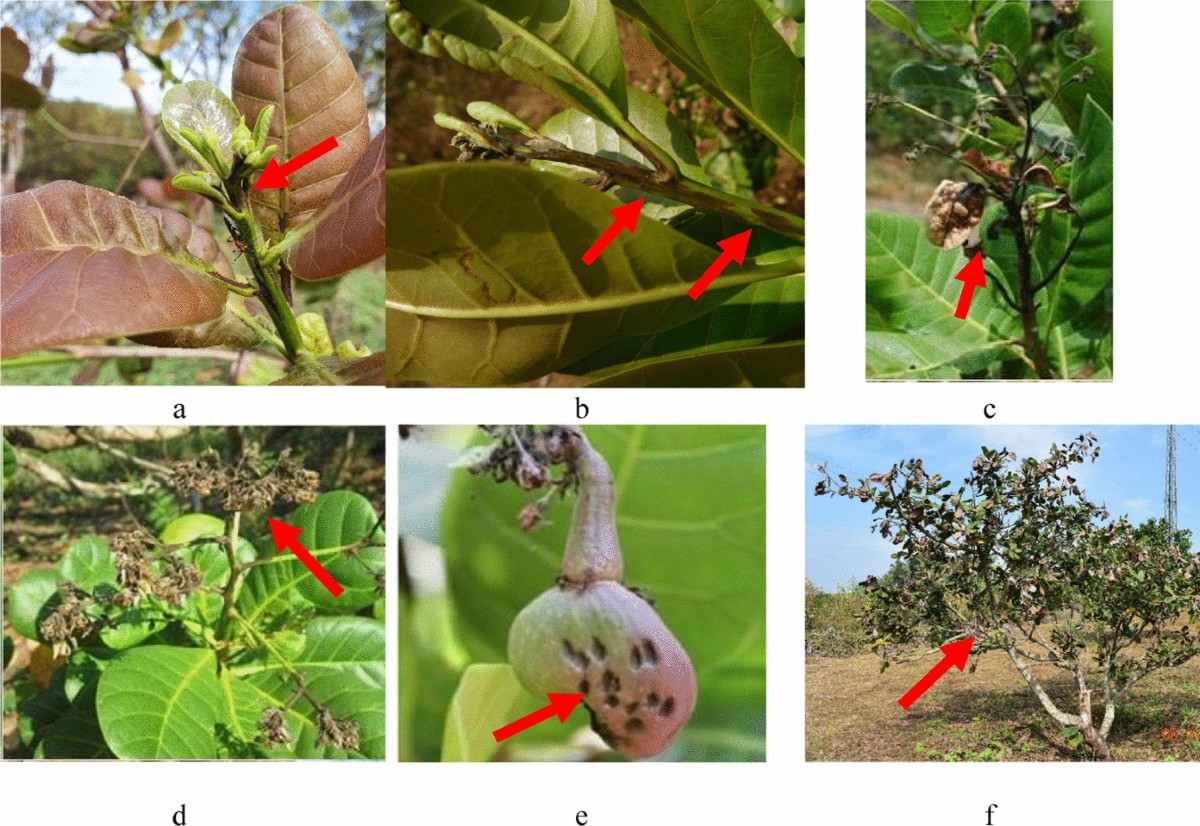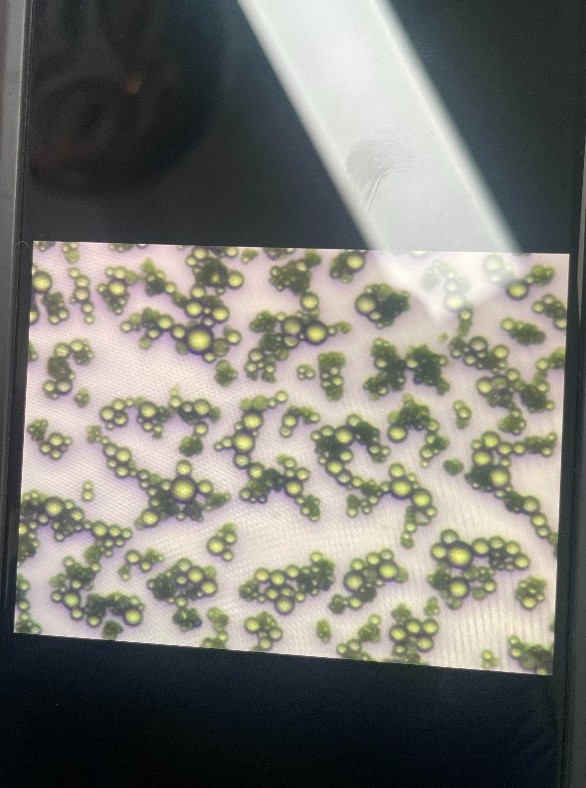
Cashew anthracnose
Anthracnose on cashew trees is one of the serious problems that cashew farmers in many countries, especially in Vietnam, have to face. This disease is caused by fungi and can cause great damage to the yield and quality of cashew nuts. With high economic value, cashew has become a strategic crop for many households, and dealing with anthracnose plays an important role in protecting farmers' income.
Let's explore more about the causes, symptoms, effects and prevention measures of anthracnose on cashew trees.

1. Causes of the disease
Anthracnose on cashew trees is mainly caused by the fungus Colletotrichum gloeosporioides. This fungus thrives in humid conditions and warm temperatures, especially during the rainy season or in areas with high humidity. The fungus can survive for a long time in plant debris, soil, or water, then spread by wind, rain, and even agricultural equipment if not properly cleaned.
The characteristic of Colletotrichum fungus is its ability to develop rapidly in favorable environmental conditions, causing serious damage to crops. This means that anthracnose often breaks out strongly during times of humid climate, making prevention more difficult.
2. Symptoms of anthracnose on cashew trees
Symptoms of anthracnose on cashew trees can appear on many different parts of the tree, including leaves, flowers, fruits and branches. These signs are easy to recognize if the cashew grower observes carefully:
On leaves
On cashew leaves, anthracnose often starts with small, brown or black spots. These spots are initially small in size but quickly spread, forming large leaf burns. In severe stages, the leaves will dry out and fall off early, causing the tree to lack nutrients and weaken.
On branches and flowers
On branches and flowers, anthracnose fungus causes black or brown spots, making branches brittle and flowers fall off early. Infected cashew flowers will not be able to pollinate successfully, reducing the number of fruits produced. This directly affects cashew nut production, causing economic losses.
On the fruit
One of the most serious symptoms is when the disease attacks the cashew fruit. Cashew fruit infected with anthracnose will appear brown or black spots, causing the fruit to dry out, deform and fall off before ripening. The cashew nuts in the fruit are also affected, losing their commercial value and cannot be used for export or domestic consumption.
3. Harmful effects of anthracnose on cashew trees
Anthracnose can cause serious damage to cashew trees if not controlled promptly. At a mild level, the disease can reduce cashew yield due to the number of infected flowers and fruits. In case the disease spreads widely and at a severe stage, the entire cashew garden can be affected, leading to total loss of yield and quality of harvested cashew nuts.
In addition to the direct impact on productivity, anthracnose also causes other economic losses such as disease prevention costs, treatment of diseased trees and loss of export value due to cashew nuts not meeting quality standards.
4. Conditions for disease occurrence
Anthracnose on cashew trees often occurs strongly in humid conditions, especially during the rainy season or in areas with high humidity. The development of the pathogenic fungus is promoted by temperatures of 25-30°C and high humidity above 80%. Cashew orchards with poor drainage systems, or dense tree canopies that are not pruned are also ideal environments for anthracnose to spread rapidly.
In addition, the spread of the disease can occur through rainwater, wind, or even unclean agricultural tools, because the fungus easily adheres to and spreads through contact surfaces.
5. Measures to prevent and control anthracnose on cashew trees
Prevention and control of anthracnose on cashew trees requires a comprehensive strategy, including farming measures, environmental management and the appropriate use of pesticides.
Management of the farming environment
- Pruning branches and leaves: Cashew trees need to be pruned regularly to create ventilation, helping to reduce humidity in the canopy and reduce the risk of fungal growth. This also helps sunlight reach all parts of the tree, making the tree grow healthier.
- Good drainage: Ensure that the drainage system in the cashew orchard works effectively, avoiding water stagnation during the rainy season. This helps to minimize favorable conditions for fungal growth.
- Garden sanitation: Collect and destroy plant debris, including infected leaves, branches, and fruits. This is an effective way to eliminate potential sources of disease.
Nutrition management
Providing adequate nutrition for cashew trees helps to increase the tree's resistance to disease. Fertilizing with a balance of macro, medium, and micronutrients will help the tree grow healthily, limiting the condition of the tree being weak and susceptible to disease.
Use of pesticides
- Use of fungicides: Once the disease has appeared, farmers can use pesticides to control anthracnose. Active ingredients such as Mancozeb, Chlorothalonil, or Propiconazole are often recommended. However, it is necessary to strictly follow the dosage and spraying time to avoid drug resistance and ensure safety for human health and the environment. Some drugs contain effective active ingredients such as: An-k-zeb 800WP, Byphan 800WP, Gone Super 350EC, Bretil Super 300EC, Scortlan 80WP, Thalonil
- Preventive spraying: Preventive spraying before the rainy season or as soon as the first signs of the disease are detected can help prevent anthracnose outbreaks.
Choose disease-resistant varieties
Currently, some cashew varieties that are resistant to anthracnose have been developed and put into trial cultivation. Choosing disease-resistant varieties is one of the effective and long-term measures to minimize damage caused by anthracnose.
6. Conclusion
Anthracnose on cashew trees is a big challenge for cashew growers, especially in humid tropical climates like in Vietnam. However, with proper environmental management, nutrition, and pesticide use, the disease can be effectively controlled.
Protecting cashew trees from anthracnose not only helps increase productivity but also ensures product quality and maintains a stable source of income for farmers. In the future, research and development of disease-resistant varieties will also play an important role in minimizing the damage caused by anthracnose, contributing to the sustainable development of the cashew industry.
Bình luận
Những bình luận mới nhất



